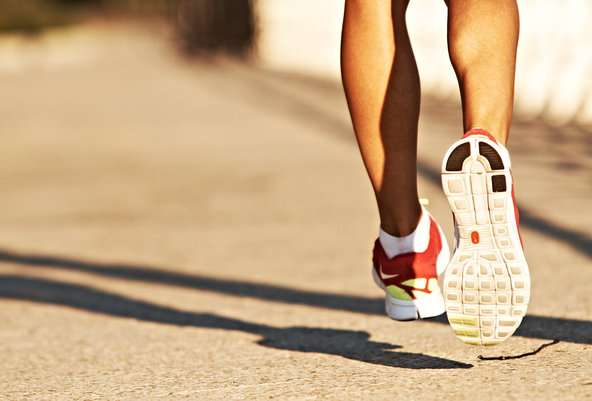Now that your running shoes are taken care of, it’s time to tap into your technique. You may already be educated in that area, but there are always great tips, reminders and new realizations about the best ways to run to maximize your efficiency and ability.
Your Hips Don’t Lie
Runner’s World makes the great point that your hips are key to good running posture. They are, after all, your center of gravity. Per Jane Unger Hahn:
The proper position of your torso while running helps to ensure your hips will also be in the ideal position. With your torso and back comfortably upright and straight, your hips naturally fall into proper alignment–pointing you straight ahead. If you allow your torso to hunch over or lean too far forward during a run, your pelvis will tilt forward as well, which can put pressure on your lower back and throw the rest of your lower body out of alignment. When trying to gauge the position of your hips, think of your pelvis as a bowl filled with marbles, then try not to spill the marbles by tilting the bowl.
Stride Right
Chi Running discusses the importance of a good running stride and leg motion. If your stride is too long, it can cause both hamstring and knee injuries. When you are landing with your feet in front of you instead of under you, your stride is too long. As they explain:
Not bending your knees when you run will create stiffness and poor circulation in your legs. Your knees should be bent at a 90º angle when you are warmed up and running at a good, medium pace.
Breathe the Best Way
Breathing properly while running is of the essence. FitDay explains four different elements to consider and abide by to have good breathing, and therefore, better running. They are as follows:
Breathe Through the Mouth: While it’s more normal to breathe through your nose, when you run, use your mouth. Breathing through your mouth allows you to take in more oxygen and release CO2. This will get more oxygen flowing to your muscles, which you need.
Breathe from the Belly: In order to get an adequate amount of oxygen, breathe from your belly.
Short and Shallow Breaths: The optimal way to breathe while running or jogging is through short, shallow breaths. If you have trouble breathing while running up hills, taking a few long breaths can help.
Breathe in Rhythm: Inhale and exhale at a consistent rate. You can measure this by breathing in two steps and out for two steps. Find a pattern that works well for you, and keep it constant.
Get your technique right, and it will help you tremendously as you voyage ahead for your walks, jogs and runs – whether they are for fun or competitive. These tips will get you on the right track.






